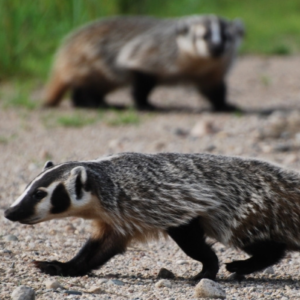
Rusty Blackbird Nature Canada
85% of this bird’s breeding range is located in Canada, so we need to ensure this bird and its habitat is protected. Save endangered species today by joining one of our campaigns! Help End the Extinction
Vital Signs
- Common name: Rusty Blackbird
- Latin name: Euphagus carolinus
- Conservation Status: Special Concern
- Range: Yukon, Northwest Territories, Nunavut, British Columbia, Alberta, Saskatchewan, Manitoba, Ontario, Quebec, New Brunswick, Prince Edward Island, Nova Scotia, Newfoundland and Labrador
- Life span: The average lifespan of adults is unknown, but the oldest recorded age is 8 years and 7 months
- Size: 21-25 cm in length, 47-80 g in weight, 37 cm wingspan

Male and female Rusty Blackbirds have pale yellow eyes and a black bill, which is slightly curved. In the winter, they both look rust-coloured. During the breeding season, the male is all black and the female is brown.
Rusty Blackbird Facts
- For breeding, they prefer forests of coniferous trees that are close to wetlands
- Mostly eats seeds and insects, but has been known to attack and eat other birds, including sparrows, robins, and snipe
- Has many foraging behaviours that include wading in the water and flipping over leaves and sticks
- Looks very similar to Brewer’s Blackbird, and the two are often confused with each other

Threats
The Rusty Blackbird is losing parts of its breeding habitat to cropland conversion. It’s also thought that their breeding habitat is being degraded due to climate change, acidification (caused by industrial waste), and mercury contamination.
What’s Being Done
Unfortunately, there is little information about the Rusty Blackbird which makes conservation efforts difficult. However, there is a management plan in place with the goal of stopping populations from going down and, eventually, increasing them. One of the key strategies in this plan is to learn more about this bird’s habits as well as what threats it face

Canada has committed to the goal of protecting 30% of lands, ocean, and freshwater in Canada by 2030. This goal will help protect ecosystems, restore habitats, and fight climate change. All these things are a step in protecting Canada’s at-risk animals—so let’s hold the federal government to their promise.
How to Help
- Report Sightings: Record any sights of the Rusty Blackbird with eBird.
- Take Part: Participate in your local Christmas Bird Count, contact your local Bird Banding Association, and make your city bird friendly!
- Help Out: Write your MP, and tell them how the protection of our at risk species is important to you.
- Learn: Stay informed about endangered species by signing up for Nature Canada’s monthly e-newsletter.
- Find out more: Help us end the extinction by taking action for nature today—visit conservation websites like Nature Canada or join one of our campaigns!
Resources
- Canada – Management Plan for the Rusty Blackbird in Canada
- The Cornell Lab – All About Birds: Rusty Blackbird
- COSEWIC – Assessment and Status Report
- SARA – Species Profile
Want to Help?
Hello nature life wilderness is the world’s envy. It’s our duty to keep our true north strong and green.
Donate

